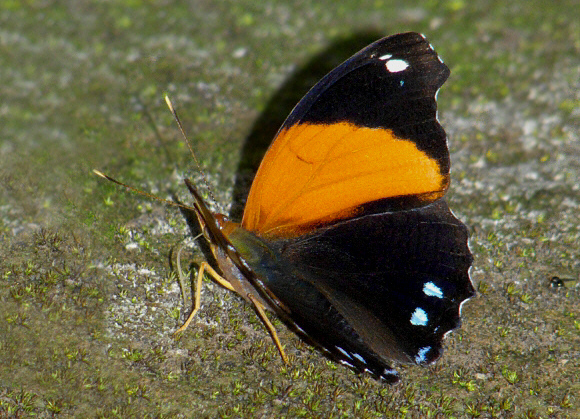 Epiphile lampethusa, male, Huanuco, Peru – Dave Griffiths
Epiphile lampethusa, male, Huanuco, Peru – Dave Griffiths
Introduction
The Biblidinae are recognised by their diverse but simple and colourful patterns. In the neotropics their representatives include the tribe Epiphilina, which includes the genera Pyrrhogyra, Asterope, Temenis, Nica, Peria, Lucinia, Bolboneura and Epiphile.
There are 16 Epiphile species, distributed variously from Mexico to Bolivia. They all have a pattern of bright orange bands on a dark brown ground colour. Most species have 2 or 3 narrow bands, but in lampethusa these merge into a single broad swathe of orange extending across the basal half of the forewings. In males of most species the dark areas are overlaid with a strong blue iridescence although in lampethusa this is barely discernable. The underside hindwings of all species are lightly marbled in brown and grey, with a series of post-median ocelli, and a very distinctive cream ‘tooth’ mark on the costa.
Epiphile lampethusa is confined to Peru and Bolivia
Habitats
This species is found on the eastern slope of the Andes, at altitudes between about 400-1500m.
Lifecycle
To be completed.
Adult behaviour
The butterflies spend most of the day high in the canopy, but males occasionally descend to imbibe mineralised moisture from the edges of shallow streams. They never fully outspread their wings but often hold them at an angle of 45�, or fan them rapidly as they walk over the wet ground.
